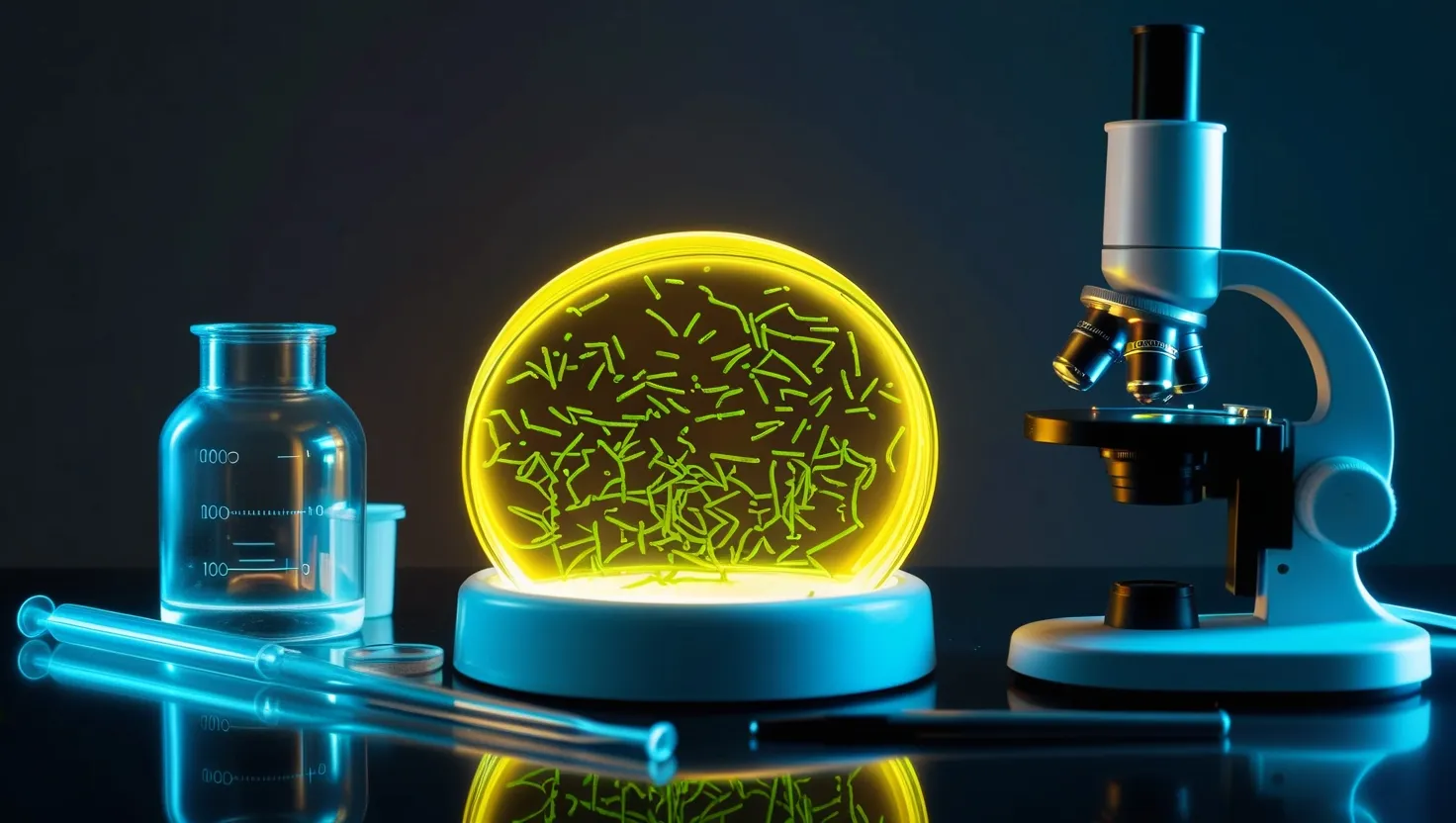In the vast and intricate world of medical research, a tiny but powerful tool has emerged: bioluminescent bacteria. These microscopic organisms, capable of producing their own light, are being harnessed by scientists to revolutionize various aspects of medicine, from disease detection and surgical guidance to targeted therapies.
To understand how these living nightlights work, we need to delve into the genetics behind their light-producing abilities. Bioluminescence is a natural process where certain bacteria, equipped with specific enzymes and molecules, convert chemical energy into light. This process involves the interaction between luciferase enzymes and their corresponding luciferin molecules. When these components meet, they trigger a biochemical reaction that results in the emission of light.
Scientists have been engineering these bioluminescent bacteria to serve as versatile tools in medical research. One of the most promising applications is in the field of cancer research. By genetically modifying bacteria to produce light, researchers can track the growth and spread of tumors in real-time within living organisms. This allows for the precise monitoring of disease progression and the evaluation of treatment efficacy without the need for invasive procedures. For instance, bioluminescent markers can be used to visualize tumor growth and metastasis in animal models, providing invaluable insights into how cancers develop and respond to treatments.
Beyond cancer, bioluminescent bacteria are also being used to detect and monitor other diseases. In the realm of infectious diseases, these glowing bacteria can help track the spread of pathogens and the effectiveness of antimicrobial treatments. For example, researchers can use bioluminescent bacteria to study the progression of infections caused by bacteria and viruses, enabling a deeper understanding of immune responses and the development of more targeted therapies.
In the area of drug discovery, bioluminescence assays have become a cornerstone. These assays allow researchers to rapidly screen potential drug candidates by measuring their impact on bioluminescent reporter genes. This method is highly sensitive and efficient, accelerating the identification of new therapeutic agents. By monitoring the effects of drugs on bioluminescent markers, scientists can gain real-time insights into how these drugs interact with biological pathways, thereby enhancing the development of targeted therapies.
Bioluminescent bacteria are also making waves in gene therapy and molecular biology. Researchers use these organisms to track the expression and regulation of genes within living cells and tissues. This is crucial for studying genetic diseases and developing gene-based therapies. For instance, bioluminescent imaging can show how genes are activated or deactivated in response to different treatments, providing critical information about gene function and regulation.
In addition to these applications, bioluminescent bacteria are being explored for their potential in guiding surgeries. Imagine a scenario where surgeons can visualize the exact location of tumors or infected tissues in real-time, using the light emitted by these bacteria. This could significantly improve the precision of surgical procedures, reducing the risk of complications and improving patient outcomes.
The future of bioluminescence in medicine is filled with exciting possibilities. Researchers are working on enhancing the sensitivity and specificity of bioluminescent imaging techniques. Advances in genetic engineering are expected to lead to the development of new bioluminescent markers with improved properties, such as brighter and more stable luminescence. Integrating bioluminescence with other imaging modalities like MRI and PET could provide even more comprehensive diagnostic tools.
Personalized medicine is another area where bioluminescence is set to make a significant impact. By using bioluminescent markers tailored to individual patients, doctors could monitor the progression of diseases and the effectiveness of treatments in real-time. This personalized approach could lead to more precise therapeutic strategies, especially in the treatment of complex diseases like cancer.
Moreover, bioluminescence is not limited to medical imaging and diagnostics; it also holds promise in therapeutic applications. For example, bioluminescence-based photodynamic therapy (PDT) involves using light produced by bioluminescent organisms to activate drugs that kill cancer cells. This method offers a targeted and less invasive alternative to traditional cancer treatments.
The use of bioluminescent bacteria in detecting pathogenic microorganisms is another significant advancement. Traditional methods of detecting urinary tract infections, for instance, can be time-consuming and sometimes inaccurate. New technologies, such as tube bioluminescence extinction technology and cellphone-based bioluminescence extinction technology, use bioluminescent bacteria to diagnose infections quickly and accurately.
In the broader context of medical research, bioluminescence is opening up new avenues for studying various biological processes. It is being used to analyze pollution in ecosystems, monitor hygiene in industries like fish and milk production, and even in the preservation of cultural artifacts. The versatility of bioluminescent bacteria makes them an invaluable tool across multiple disciplines.
As research continues to evolve, it is clear that bioluminescent bacteria will play an increasingly important role in healthcare. These tiny organisms are not just fascinating natural phenomena but also powerful tools that can illuminate the path to medical breakthroughs. With their ability to detect diseases, guide surgeries, and deliver targeted therapies, bioluminescent bacteria are indeed nature’s living nightlights, lighting the way for future medical innovations.
In conclusion, the potential of bioluminescent bacteria in medicine is vast and multifaceted. From enhancing our understanding of disease mechanisms to improving diagnostic and therapeutic strategies, these glowing organisms are set to revolutionize the medical landscape. As we continue to explore and harness the power of bioluminescence, we are not just advancing medical science; we are also uncovering new ways to improve human health and quality of life.






